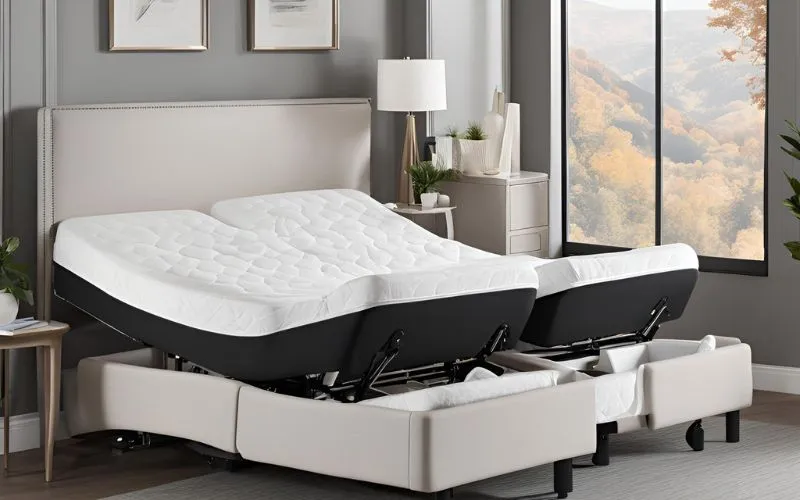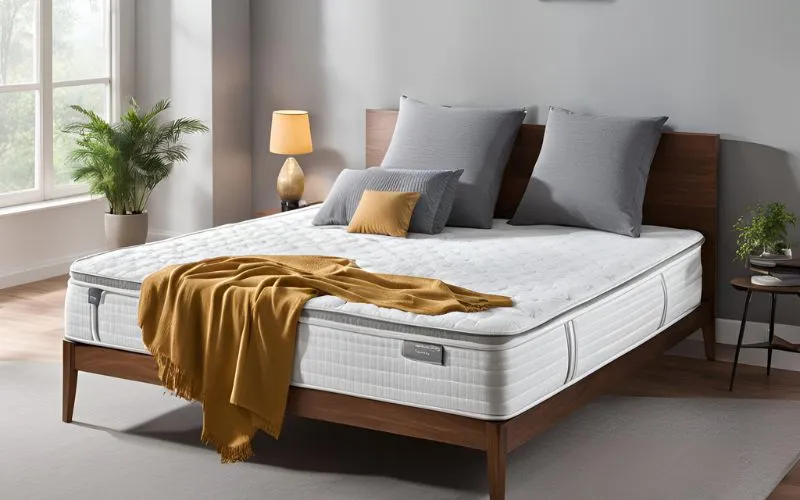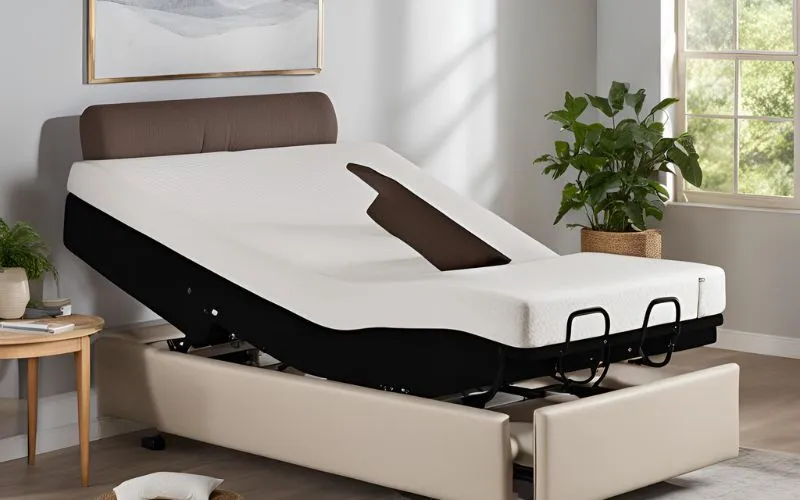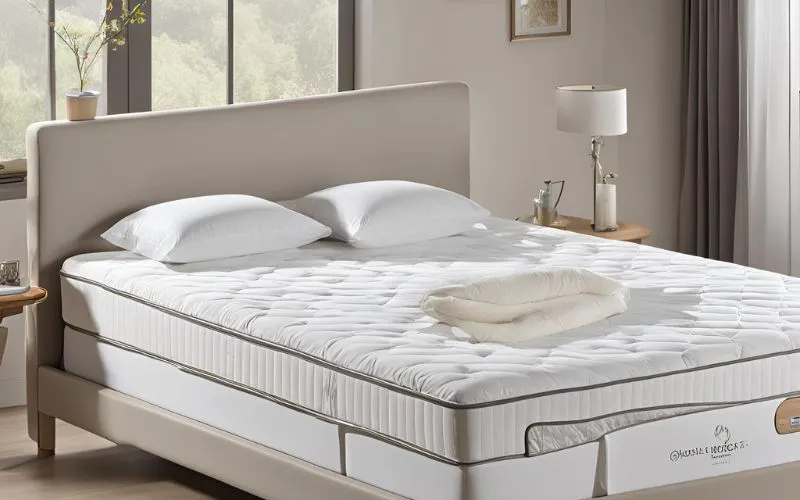Sleeping Positions for Back Pain Relief with Adjustable Beds

Introduction
Welcome to our comprehensive guide to sleeping positions for back pain relief with adjustable beds. In this article, we will explore the impact of sleeping positions on back pain, the best sleeping positions for back pain relief, and the benefits of adjustable beds for addressing back pain.
Back pain can be debilitating, and finding the right sleeping position is crucial for alleviating discomfort and promoting better spinal health. Understanding the relationship between sleeping positions and back pain is essential for improving sleep quality and overall well-being.
Understanding Back Pain and Sleeping Positions
What Causes Back Pain?
- Muscle Strain: Back pain can be caused by muscle strain, which occurs when the muscles are overworked, tense, or injured. This can happen due to heavy lifting, sudden movements, or poor posture.
- Spinal Abnormalities: Conditions such as arthritis, disc degeneration, and skeletal irregularities can contribute to chronic back pain. Arthritis can cause inflammation in the joints, disc degeneration can lead to pain and discomfort, and skeletal irregularities may put pressure on the surrounding nerves.
- Overuse and Stress: Back pain often results from tension, stress, or overuse of the back muscles and ligaments. This can happen due to repetitive actions, excessive sitting, or overexertion during physical activities.
- Underlying Medical Conditions: There are various underlying medical conditions, such as scoliosis, osteoporosis, and fibromyalgia, that can manifest as back pain. These conditions require medical attention and specialized treatment.
- Injury: Trauma or injury to the back, such as fractures, sprains, or strains, can lead to acute or chronic back pain. It’s important to seek medical evaluation and treatment for back injuries.
Understanding the causes of back pain is the first step in addressing discomfort and finding suitable solutions. Along with adjusting sleeping positions and utilizing supportive bedding, individuals can also benefit from targeted exercises, physical therapy, and holistic treatments to manage and alleviate back pain.
How Does Sleeping Position Affect Back Pain?
The sleeping position directly impacts back pain, as it determines the alignment and support of the spine during rest. Sleeping in a position that strains the back or places excessive pressure on the spine can exacerbate discomfort and contribute to musculoskeletal issues.
Conversely, adopting a suitable sleeping position can alleviate pressure on the back, promote proper spinal alignment, and relieve tension in the muscles and ligaments.
Best Sleeping Positions for Back Pain Relief
1. Side Sleeping
Side sleeping is a recommended position for back pain relief, particularly when the knees are slightly bent. This position helps maintain the natural curvature of the spine and minimizes pressure on the lower back. Placing a pillow between the knees can further enhance spinal alignment and reduce strain on the back.
- Reduces pressure on the lower back
- Maintains natural spine curvature
- Enhances spinal alignment with a pillow between the knees
Pillow TypeBenefitsMemory FoamConforms to the body’s shape and provides supportContourOffers extra support for the neck and shouldersBodySupports the entire body and helps maintain alignment
2. Back Sleeping
Back sleeping, with proper support for the lower back, can also aid in alleviating back pain. Using a contoured or adjustable pillow under the knees can help maintain the natural curve of the lower back and promote spinal alignment. Additionally, ensuring that the mattress provides adequate support is crucial for back sleepers.
3. Knee Hug Position
The knee hug position is a simple yet effective technique for easing back pain and promoting relaxation. By lying on your back and gently pulling your knees toward your chest, you can release tension in the lower back and hips, providing significant relief from discomfort. This position also encourages better blood circulation and facilitates spinal alignment, contributing to a healthier and more balanced posture.
Benefits of the Knee Hug Position
- Relieves lower back and hip tension
- Promotes relaxation and stress reduction
- Enhances blood circulation
- Facilitates spinal alignment
- Improves posture and overall comfort
Technique Tips
When practicing the knee hug position, it’s important to remember a few key points to maximize its effectiveness:
- Find a quiet, comfortable space for this exercise
- Breathe deeply and exhale as you draw your knees closer to your chest
- Avoid straining or forcing the position – gently stretch until you feel a comfortable, gentle pull
- Hold the position for 15-30 seconds, then release and repeat as needed
Adjustable Beds for Back Pain Relief
Benefits of Adjustable Beds
Adjustable beds offer numerous benefits for individuals seeking back pain relief. These beds allow users to customize their sleeping positions, elevating the head, legs, or both, to achieve optimal spinal alignment. Additionally, adjustable beds provide enhanced support and comfort, contributing to improved sleep quality and reduced back strain.
Choosing the Right Adjustable Bed
When it comes to selecting the right adjustable bed to alleviate back pain, there are several critical factors to consider. A thorough understanding of these key aspects can guide you toward choosing the best option for your specific needs.
One of the primary considerations when choosing an adjustable bed is its compatibility with different types of mattresses. The bed should be designed to work seamlessly with various mattress materials, including memory foam, latex, or hybrid mattresses. This compatibility ensures that the mattress retains its supportive qualities even when adjusted to different positions.
An ergonomic design is crucial for an adjustable bed to provide optimal back pain relief. Look for features such as adjustable lumbar support, which can help maintain the natural curve of the spine and alleviate pressure on the lower back. Additionally, the bed frame should promote healthy spinal alignment, allowing you to rest comfortably without exacerbating back discomfort.
Convenience is key when it comes to adjusting the bed to your preferred position. User-friendly controls, whether integrated into the bed frame or accessible through a remote, make it easy to find the perfect angle for alleviating back pain. Smooth and quiet adjustment mechanisms are also desirable, ensuring that changes in the bed’s position can be made without disturbing your rest.
While the core functions of an adjustable bed focus on providing support and comfort for back pain relief, additional features can further enhance the overall experience. Look for options such as massage functions, which can help relax muscles and improve circulation. Zero gravity positioning is another valuable feature that reduces gravitational pressure on the spine, offering profound relief for back pain sufferers.
Conclusion
Addressing back pain through suitable sleeping positions and ergonomic bedding solutions is integral to improving overall comfort and spinal health. By understanding the relationship between sleeping positions and back pain, individuals can make informed choices to alleviate discomfort and enhance the quality of their sleep. The integration of adjustable beds presents a versatile and effective approach to promoting back pain relief and fostering better sleep experiences.




